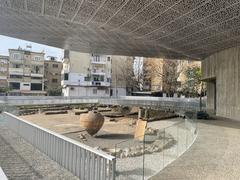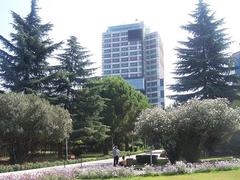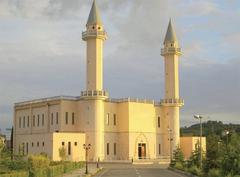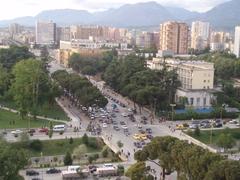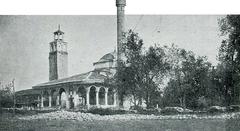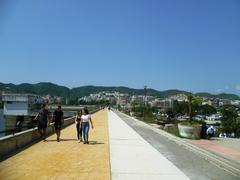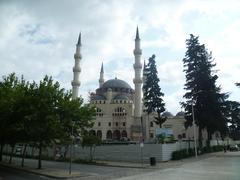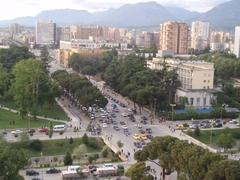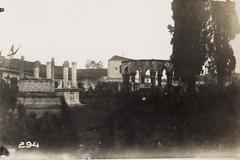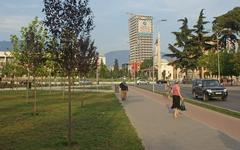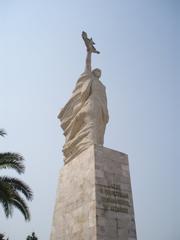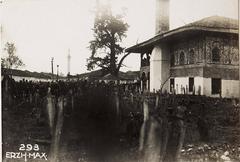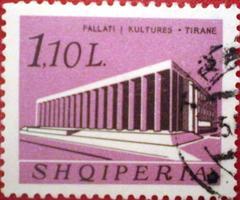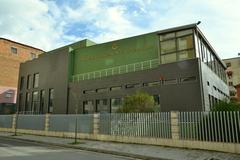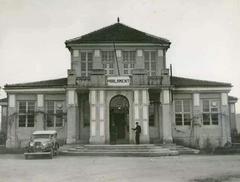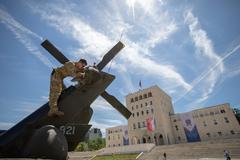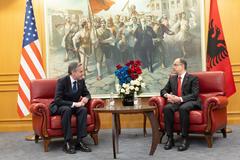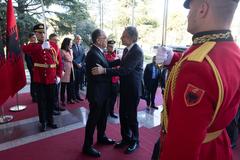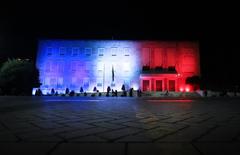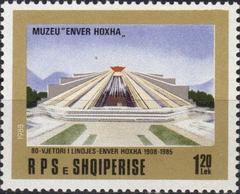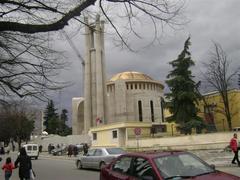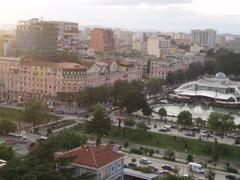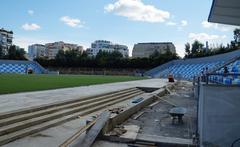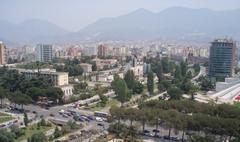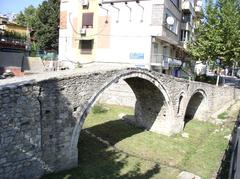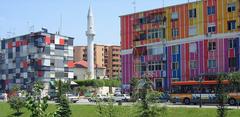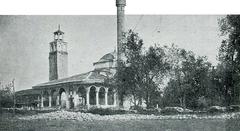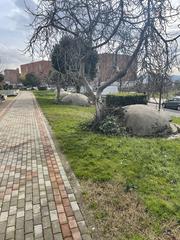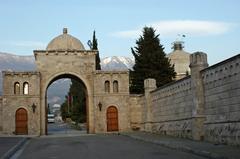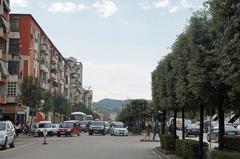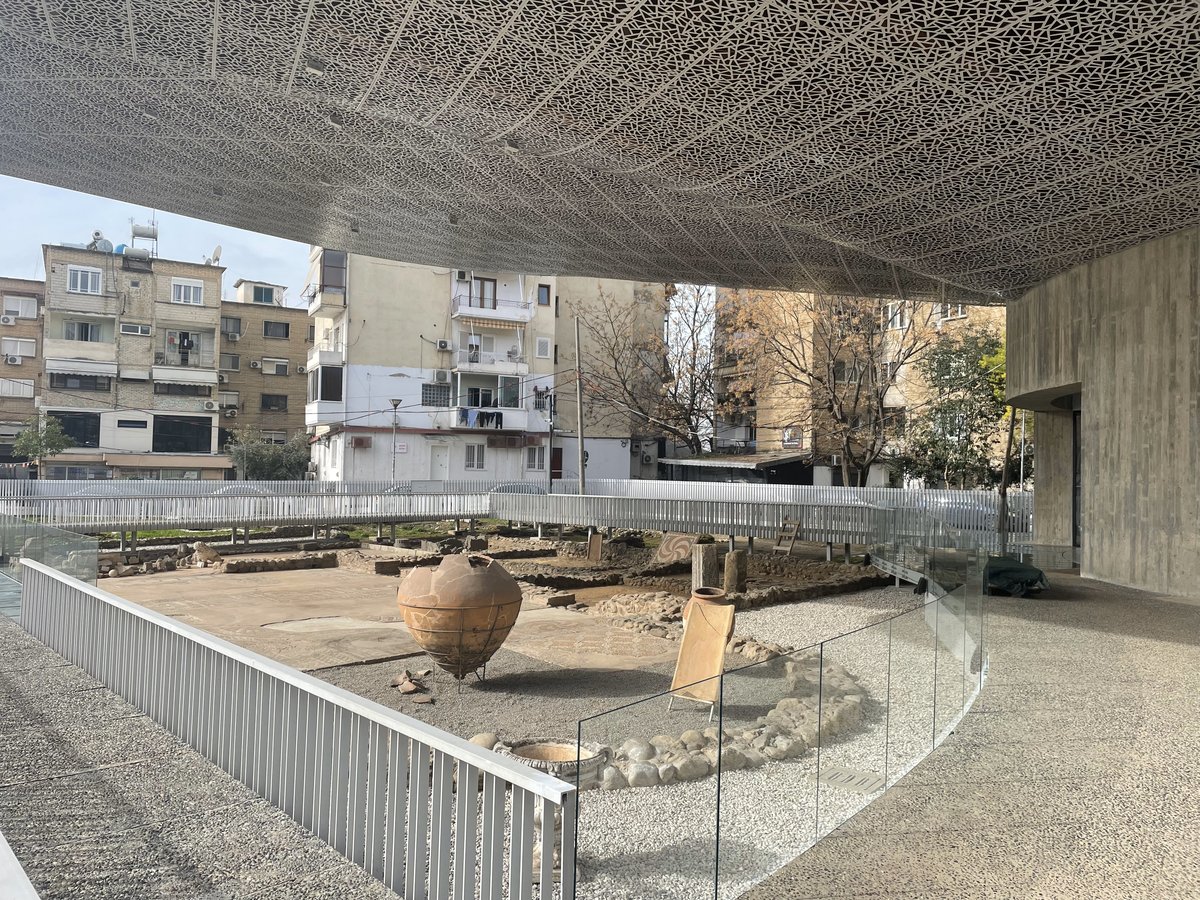
Tirana Mosaic Visiting Hours, Tickets, and Historical Sites Guide
Date: 14/06/2025
Introduction
The Tirana Mosaic, or “Mozaiku i Tiranës,” is one of Albania’s most significant archaeological discoveries, offering a fascinating glimpse into the ancient Roman and early Christian eras of Tirana. Nestled in the heart of the city, this monument reveals the city’s oldest physical evidence of settlement and stands as a testament to Albania’s integration within the Roman and Byzantine worlds. This comprehensive guide provides detailed information on the mosaic’s history, visiting hours, ticket policies, accessibility, and tips for an enriching visit (Tirana Triennale; Humbo).
Table of Contents
- Discovery and Location
- Historical Context and Chronology
- Artistic and Architectural Features
- Archaeological and Cultural Significance
- Conservation and Educational Value
- Visitor Information: Hours, Tickets, and Accessibility
- Travel Tips for Visiting
- Nearby Attractions and Amenities
- Frequently Asked Questions (FAQ)
- Conclusion and Final Tips
- References and Further Reading
Discovery and Location
The Tirana Mosaic was discovered in 1972 during construction work on Muhamet Gjollesha Street, situating it within a residential area that was once on the outskirts of ancient Tirana. Today, it is easily reached via public transport or on foot from the city center, located near “21 Dhjetori” square and just a short walk from Skanderbeg Square (Tirana Triennale; ASP Revitalization Report).
Address: Rruga Sulejman Pitarka 8, Tirana 1001, Albania
How to Get There:
- By Bus: Lines 6 and 10 stop nearby.
- By Foot: Approximately 15–20 minutes from Skanderbeg Square.
- By Car: Limited street parking is available.
Historical Context and Chronology
Roman Origins (1st–3rd Century AD)
The mosaic was originally part of a Roman “villa rustica”—a rural estate typical of wealthy landowners in Roman Illyria. Built between the 1st and 3rd centuries AD, the villa served both residential and agricultural functions, reflecting the region’s integration into the Roman Empire (Humbo; Visit Tirana).
Early Christian and Byzantine Transformation (4th–6th Century AD)
With the spread of Christianity, the site was adapted into an early Christian basilica. Archaeological evidence—such as the addition of apses and the inclusion of Christian iconography—marks this significant cultural and religious shift during the 4th to 6th centuries AD, aligning Tirana with broader regional transformations (Tirana Triennale).
Artistic and Architectural Features
Mosaic Design and Iconography
The mosaic floors are the site’s highlight, featuring intricate geometric patterns, floral motifs, and early Christian symbols such as fish (ichthys) and birds. Crafted from small tesserae of colored stone, ceramic, and glass, these artworks exemplify Roman and Byzantine artistic traditions and reflect the villa’s affluence and cultural sophistication (Visit Tirana; Spotting History).
Architectural Remains
Foundations and partial walls of the original villa and subsequent basilica remain visible, providing insights into historical construction techniques and the evolution of domestic and sacred architecture in the region (duemarivirtualtours.com).
Archaeological and Cultural Significance
The Tirana Mosaic is the earliest physical evidence of Tirana’s settlement, fundamentally altering our understanding of the city’s origins. Its transformation from a Roman villa to a Christian basilica mirrors Albania’s broader historical narrative, bridging ancient pagan traditions and the rise of Christianity. The site’s mosaics bear stylistic resemblances to those found in Durrës and Apollonia, indicating cultural exchanges across the Balkans (Humbo).
As a declared first-category cultural monument since 1973, the mosaic is a cornerstone of Tirana’s identity, fostering civic pride and serving as an educational resource for students and scholars (ASP Revitalization Report).
Conservation and Educational Value
Ongoing conservation, funded by the Albanian government and heritage organizations, has stabilized the mosaics and protected them from environmental damage. The site is covered and partially enclosed to shield the tesserae from weathering. Educational programs, guided tours, and interpretive signage enhance public understanding and engagement (Humbo).
Visitor Information: Hours, Tickets, and Accessibility
Visiting Hours:
- Generally open from 9:00 AM to 5:00 PM, Tuesday through Sunday.
- Closed on Mondays and public holidays.
- For the most current hours, confirm with local tourism offices or the site directly (ASP Revitalization Report, p. 26).
Ticket Information:
- Admission is often free or supported by modest donations.
- Some sources mention a symbolic fee (e.g., 300 Albanian Lek); ask onsite or check official channels for updates.
Accessibility:
- Wheelchair accessible, with ramps and paved pathways, though some uneven surfaces exist due to the archaeological nature of the site.
Contact for Latest Info:
- Mobile/WhatsApp: +355 69 373 2800
- Email: [email protected]
- Website: tirana-mosaic.com
Travel Tips for Visiting
- Best Time to Visit: Spring and autumn offer pleasant weather and fewer crowds; early mornings are ideal for photography and a peaceful experience.
- What to Bring: Comfortable shoes, water, and sun protection. Photography is allowed, but please do not use flash near the mosaics.
- Guided Tours: Available through local organizations and sometimes included with group bookings. Advance arrangement is recommended for in-depth historical context.
- Duration: The site can be explored in 20–40 minutes, but enthusiasts may linger longer.
Nearby Attractions and Amenities
Combine your visit with other cultural sites:
- Skanderbeg Square: The city’s central plaza.
- National History Museum: Featuring the renowned “Albania” mosaic on its façade.
- Et’hem Bey Mosque: A fine example of Ottoman architecture.
- Mosaic Home: Adjacent hostel and café (Kolorz Garden Cafe and Deli) with basic services.
The area is well-served by cafés, restaurants, and shops, making it easy to plan a half-day or full-day itinerary.
Frequently Asked Questions (FAQ)
Q: What are the opening hours?
A: Generally 9:00 AM to 5:00 PM, Tuesday to Sunday. Confirm for up-to-date information.
Q: Is there an entrance fee?
A: Admission is usually free or donation-based. Inquire onsite for any changes.
Q: Is the site wheelchair accessible?
A: Yes, with ramps and paved paths, though some uneven ground exists.
Q: Are guided tours available?
A: Yes, through local organizations or advance booking.
Q: Can I take photographs?
A: Photography is allowed, but avoid using flash.
Q: How do I find the site easily?
A: Use GPS and look for signage near Sander Prosi or Muhamet Gjollesha Street.
Conclusion and Final Tips
The Tirana Mosaic is a vital link to Albania’s ancient heritage, blending Roman artistry with early Christian symbolism. Conservation and educational initiatives have made it an accessible and rewarding destination for all visitors. Combine your visit with nearby attractions for a comprehensive cultural experience, and use the Audiala app for real-time updates, interactive maps, and travel tips.
Whether you are a history lover, a curious traveler, or a local seeking to connect with your roots, the Tirana Mosaic offers a captivating journey into the past—right in the heart of modern Tirana (Humbo; Tirana Triennale; Visit Tirana).
References and Further Reading
- Tirana Mosaic: Visiting Hours, Tickets & Guide to Tirana’s Historic Roman Site (Tirana Triennale)
- Tirana Mosaic (Humbo)
- Comprehensive Guide to Tirana Mosaic (Visit Tirana)
- Revitalization of the Mosaic of Tirana (ASP Revitalization Report)
- duemarivirtualtours.com
- Spotting History
- Albania Tourist Guide
- GPSmyCity
- Tirana Municipality
